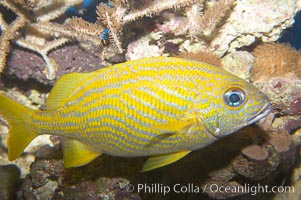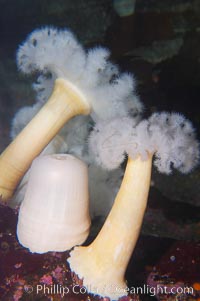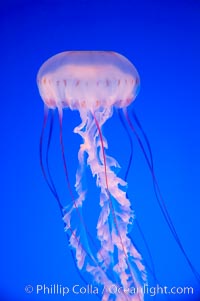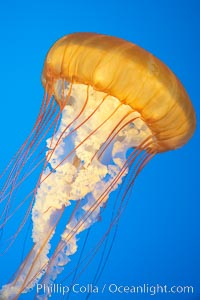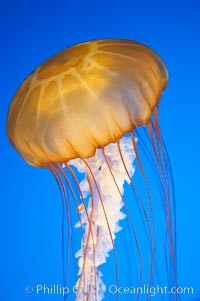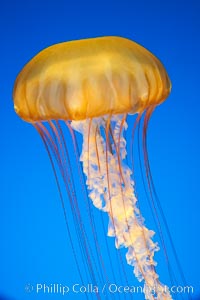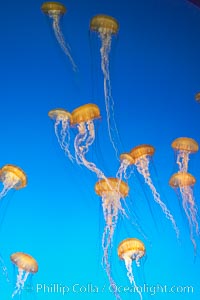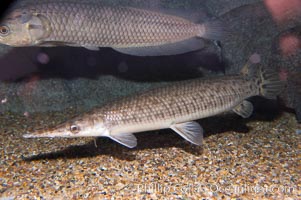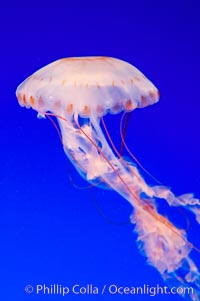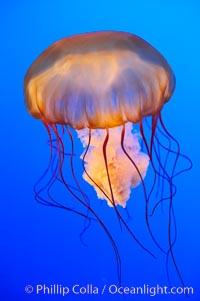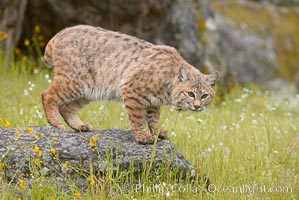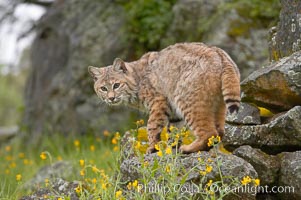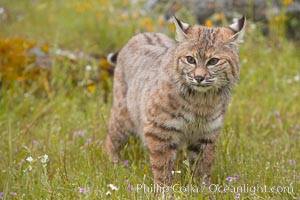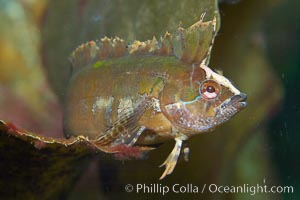
Crevice rockfish. Seldom seen, kelpfish hover among the seaweeds in wave swept tidepools and reefs. These secretive fish rapidly change color to match watever background they are near. This kelpfish has assumed the coloration of the blade of kelp it is resting on.
Species: Crevice rockfish, Gibbonsia montereyensis
Location: Monterey, California
Image ID: 13711
Species: Crevice rockfish, Gibbonsia montereyensis
Location: Monterey, California
Image ID: 13711
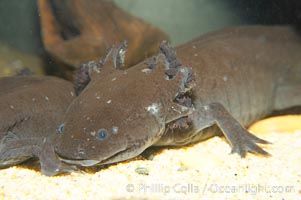
Axolotl. Axolotls are neotenic, which means they attain reproductive maturity while still in their larval form. Axolotls are extremely endangered in the wild and protected by law.
Species: Axolotl, Ambystoma mexicanum
Image ID: 13983
Species: Axolotl, Ambystoma mexicanum
Image ID: 13983
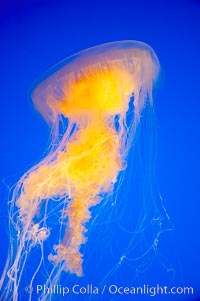
Egg-yolk jellyfish, fried egg jelly.
Species: Fried egg jellyfish, Phacellophora camtschatica
Image ID: 14035
Species: Fried egg jellyfish, Phacellophora camtschatica
Image ID: 14035
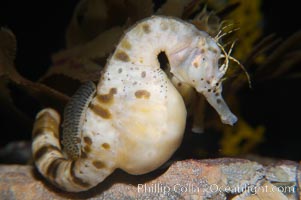
Pot-bellied seahorse, male, carrying eggs. The developing embryos are nourished by individual yolk sacs, and oxygen is supplied through a placenta-like attachment to the male. Two to six weeks after fertilization, the male gives birth. The babies must then fend for themselves, and few survive to adulthood.
Species: Pot-bellied seahorse, Hippocampus abdominalis
Image ID: 14472
Species: Pot-bellied seahorse, Hippocampus abdominalis
Image ID: 14472
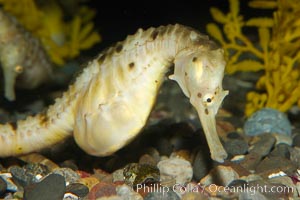
Pot-bellied seahorse, male, carrying eggs. The developing embryos are nourished by individual yolk sacs, and oxygen is supplied through a placenta-like attachment to the male. Two to six weeks after fertilization, the male gives birth. The babies must then fend for themselves, and few survive to adulthood.
Species: Pot-bellied seahorse, Hippocampus abdominalis
Image ID: 14558
Species: Pot-bellied seahorse, Hippocampus abdominalis
Image ID: 14558
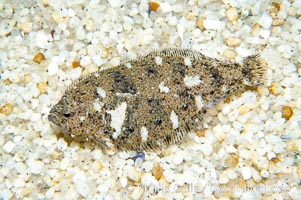
A small (2 inch) sanddab is well-camouflaged amidst the grains of sand that surround it.
Species: Sanddabs, Citharichthys
Image ID: 14936
Species: Sanddabs, Citharichthys
Image ID: 14936
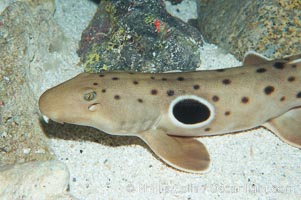
Epaulette shark. The epaulette shark is primarily nocturnal, hunting for crabs, worms and invertebrates by crawling across the bottom on its overlarge fins.
Species: Epaulette shark, Hemiscyllium ocellatum
Image ID: 14958
Species: Epaulette shark, Hemiscyllium ocellatum
Image ID: 14958
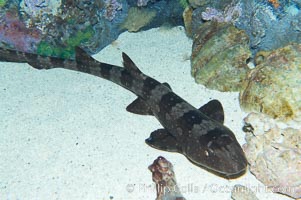
Whitespotted bamboo shark.
Species: Whitespotted bamboo shark, Chiloscyllium plagiosum
Image ID: 14963
Species: Whitespotted bamboo shark, Chiloscyllium plagiosum
Image ID: 14963
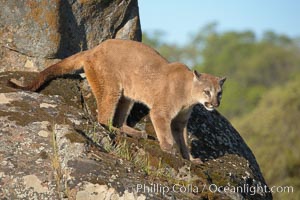
Mountain lion, Sierra Nevada foothills, Mariposa, California.
Species: Mountain lion, Puma concolor
Image ID: 15792
Species: Mountain lion, Puma concolor
Image ID: 15792
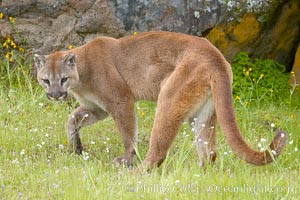
Mountain lion, Sierra Nevada foothills, Mariposa, California.
Species: Mountain lion, Puma concolor
Image ID: 15794
Species: Mountain lion, Puma concolor
Image ID: 15794

Mountain lion, Sierra Nevada foothills, Mariposa, California.
Species: Mountain lion, Puma concolor
Image ID: 15795
Species: Mountain lion, Puma concolor
Image ID: 15795

Mountain lion, Sierra Nevada foothills, Mariposa, California.
Species: Mountain lion, Puma concolor
Image ID: 15796
Species: Mountain lion, Puma concolor
Image ID: 15796

Mountain lion, Sierra Nevada foothills, Mariposa, California.
Species: Mountain lion, Puma concolor
Image ID: 15797
Species: Mountain lion, Puma concolor
Image ID: 15797

Mountain lion, Sierra Nevada foothills, Mariposa, California.
Species: Mountain lion, Puma concolor
Image ID: 15799
Species: Mountain lion, Puma concolor
Image ID: 15799

Mountain lion, Sierra Nevada foothills, Mariposa, California.
Species: Mountain lion, Puma concolor
Image ID: 15802
Species: Mountain lion, Puma concolor
Image ID: 15802
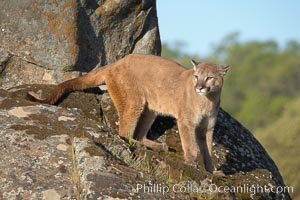
Mountain lion, Sierra Nevada foothills, Mariposa, California.
Species: Mountain lion, Puma concolor
Image ID: 15808
Species: Mountain lion, Puma concolor
Image ID: 15808
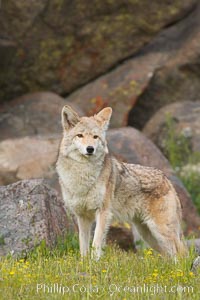
Coyote, Sierra Nevada foothills, Mariposa, California.
Species: Coyote, Canis latrans
Image ID: 15879
Species: Coyote, Canis latrans
Image ID: 15879
